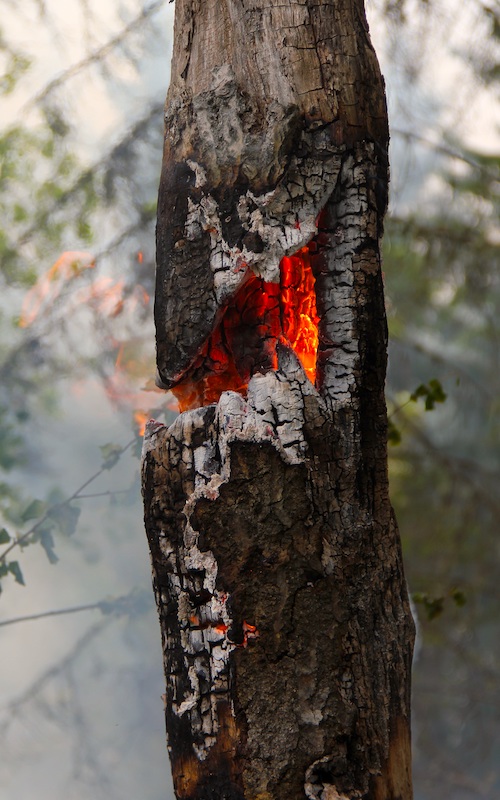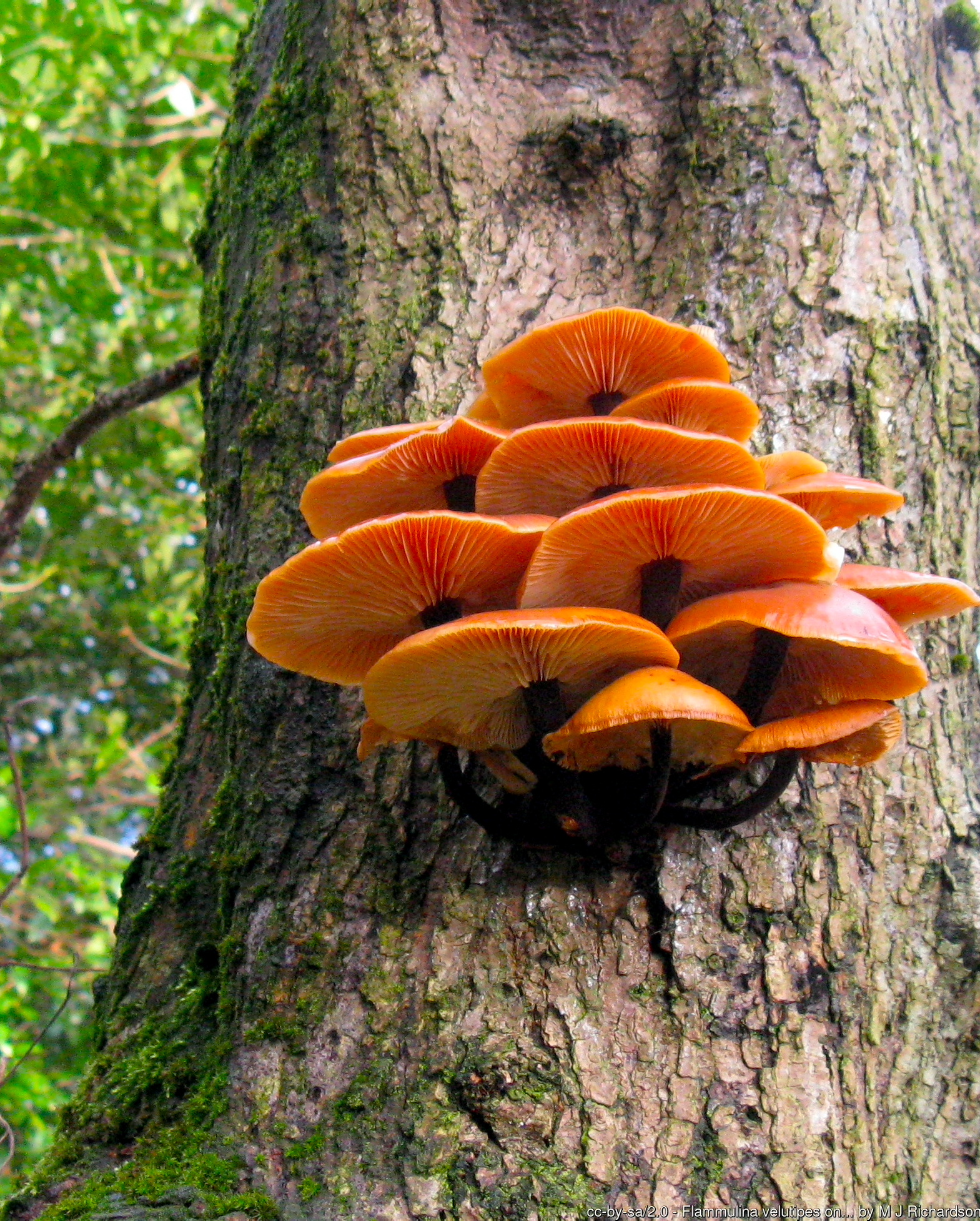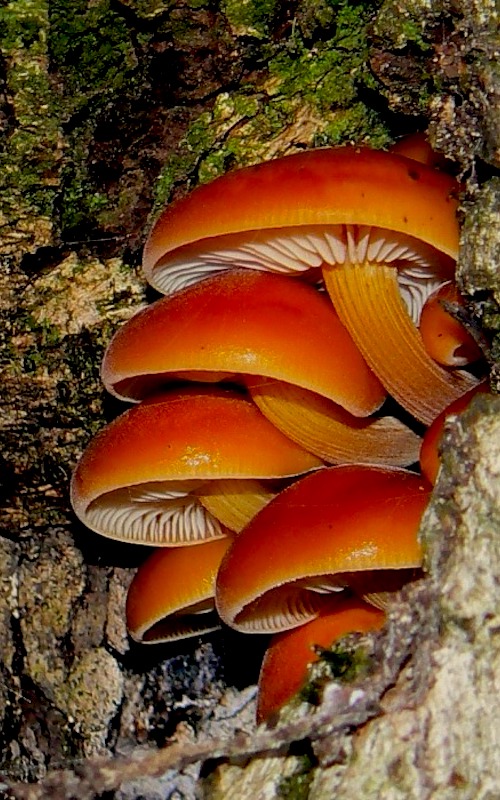Velvet shanks
Summary
Velvet shanks are one of the thirteen mushrooms, one can forage only during the winter season. They are of particular interest to the commonfolk of Cymru region, who use them as one of the key ingredients in the Winter Stew for the Festival of Ædean Paths. Velvet shanks prefer partially enclosed spaces surrounded by woods, e.g., large forest meadows. To have value for the stew, they need to be covered in flames before full maturation of the fruiting bodies. When the flames are consumed on spot — the mushroom strengthens its connection to the Ædean concept of fire and burning, which are essential for the warming properties of the festival dish.
Description
Cap
Rounded, with a warm colouration ranging from light-orange in younger shrooms to reddish-brown in older ones. Shiny and slippery when wet or during humid weather, mat otherwise. In younger specimens, a knob can be present in the middle. The edge tends to be lighter than the centre.
Gills
Creamy white to pale yellowish attached narrowly to the stem. Wide and thin, quite flexible when moist.
Stem
Orangy to dark brown/black with a velvety surface. Brittle and full in younger specimens, while flexible and hollow in older ones.
Odour
Pleasant and reminiscent of warmth by the fireplace in winter, very characteristic for this species.
Taste
Mellow, especially in younger fruiting bodies. Older ones show a tendency to become spicy.
Growth cycle
Spread by flames — spore release
The spores are spread with flames during the wintertime, but the process can be forced in other seasons as well. If a shortage is predicted in the upcoming seasons, the inhabitants of Cymru will use some of their supplied dried shanks and will walk around the forest meadows burning the mushrooms in a metal incensory. The smoke will have a brownish-red tinge and a faint iridescence could be observed, reminiscent of the fish scales under water.
Taking roots — the spores grow into a net
In the first year, the spores that landed on the bark of the trees will take roots, but only when the trees are weak enough to resist the burning concept sitting at the end of the roots. Usually, these are the dead or very dry trees that fall prey to the velvet shanks in the first year. It can also happen that the wood gets infected in the first year when it is dry with the mycelium extinguished with the coming of the rainy season. When that happens the tree will sustain some damage but usually will still be able to grow. The wood that is formed in the process is prized for its unique pattern, similar to that of a complex net of a black web. The process is very difficult to control and predict, though, so there are no known ways to provide a steady source of this material.
Consume the tree — maturation
When the roots form a net and the tree cannot resist the mycelium anymore, the maturation process begins. The mushroom grows deep into the core and consumes the tree from the inside, at which point there is no rescue for it. The first fruiting bodies should start forming in the winter of the second year after infection. The cold acts as a stress factor for the velvet shanks and stimulates the formation of the fruiting bodies, driven by the risk of fire concept to die out. Thus, at some parts of the Cymru, especially higher in the hills or in the mountains, velvet shanks can often sprout even during spring or autumn provided the temperature drops below the melting point of the snow. Finally, with the fruiting bodies reaching full maturity, the caps undergo self-immolation from the edges, burning down the gills and releasing spores into the smoke-filled air.
Habitat
Velvet shanks are typically found near forest meadows, preferably surrounded by a mixture of old deciduous and coniferous trees. While conifers typically show high affinity towards the fire and flame concepts, they very rarely reach maturity and as such do not release spores. As a result, the velvet shanks that affect the deciduous trees tend to be more widespread than the conifer-affecting ones. At times, however seldomly, especially in older parts of the forests, the very old conifers tend to provide enough wood to feed the mycelium. The mushroom would then hit the spore release phase and self-ignite starting a fire. Back in the old days, spontaneous fires caused by the velvet shanks tended to be a huge problem for local communities as many old conifers were used as high-quality timber. Over time, however, when the knowledge of the fire concept hidden within these mushrooms spread around the commonfolk, the process was tamed and the velvet shanks ceased to cause harm.
Cultural use
Velvet shanks are probably one of the most important mushrooms in the Cymru region as they are used as a main ingredient in the stew for the Festival of Ædean Paths along with some other local ingredients.

Velvet shanks are known to cause winter forest fires due to self-immolation of mature fruiting bodies. Sometimes, though, particularly if the frost is thick and cold, the damage can be limited to the trunk affected by the mycelium. If that happens the burn can be limited to a single tree, leaving a small hollow for birds and rodents to use.










Oh, very interesting! It's really cool that they spread through fire like that. Do people know why that is? Or are there any superstitions or myth about why that is? :D
Creator of Araea, Megacorpolis, and many others.
I didn;t think about the myths about these, no. :> The knowledge with spores transmitting through fire is a known one, but I'm not sure if commonfolk do understand the importance of the concepts of fire and how they are connected to the mycelium of the velvet shanks. That sort of stuff is usually covered by skalds, very often trickster skalds, who in that world are "scientists that LOVE to play with knowledge" on a fundamental level of pure properties. But you gave me a nice prompt to think about. Thanks! :D